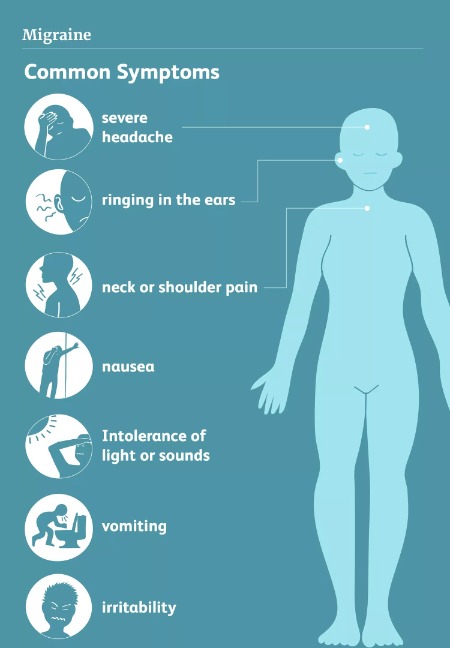Headache

HEADACHE

What Is Migraine?
A migraine is a headache that can cause severe throbbing pain or a pulsing sensation, usually on one side of the head. It's often accompanied by nausea, vomiting, and extreme sensitivity to light and sound. Migraine attacks can last for hours to days.
Signs & Symptoms Of Migraines
- Intense throbbing or dull aching pain on one side of your head or both sides
- Pain that worsens with physical activity
- Nausea or vomiting
- Changes in how you see, blurred vision or blind spots
- Being bothered by light, noise, or odours
- Feeling tired and/or confused
- Stuffy nose
- Feeling cold or sweaty
- Stiff or tender neck
- Light headedness
- Tender scalp
Possible symptoms of migraines include:

What Is Tension Headache?
Tension headaches are dull pain, tightness, or pressure that can feel like a clamp squeezing your skull.
They’re also called stress headaches, and they’re the most common type for adults.
Signs & Symptoms of Tension Headache
- Mild to moderate pain or pressure in the front, top, or sides of your head
- A headache that starts later in the day
- Feeling very tired
- Crankiness
- Trouble focusing
- Mild sensitivity to light or noise
- Muscle aches
Common symptoms include:

What Is Sinus Headache?
Your sinuses are air-filled spaces inside your forehead, cheekbones, and behind the bridge of your nose. When they get inflamed usually because of an allergic reaction or an infection, they swell, make more mucus, and the channels that drain them can get blocked.
The build-up of pressure in your sinuses causes pain that feels like a headache.
Signs & Symptoms Of Sinus Headache
- A runny nose
- Feeling of fullness in your ears
- Fever
- Swelling in your face
You’ll feel a deep and constant pain in your cheekbones, forehead, or the bridge of your nose. The pain usually gets stronger when you move your head suddenly or strain. At the same time, you might have other sinus symptoms, such as:

What Is An Exertional Headache?
When you exercise, or exert yourself physically, the muscles of the head, neck, and scalp need more blood to circulate. This causes the blood vessels to dilate, which can lead to a condition called exertional headache.
Signs & Symptoms Of Exertional Headache
- Are usually described as throbbing
- Occur during or after strenuous exercise
- Affect both sides of the head in most cases
- Vomiting
- Loss of consciousness
- Double vision
- Neck stiffness
These headaches:
